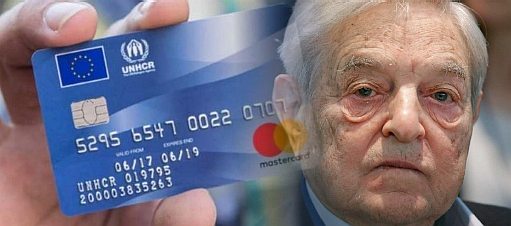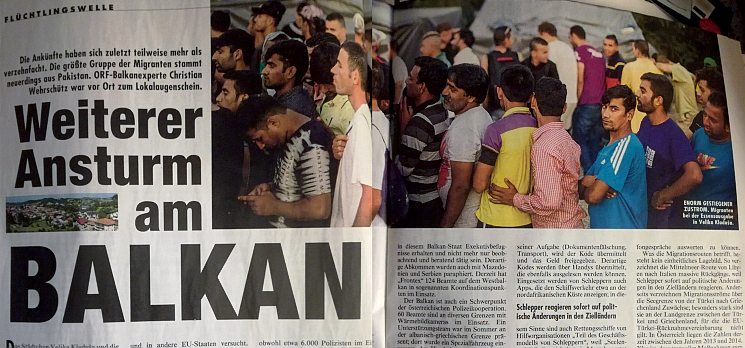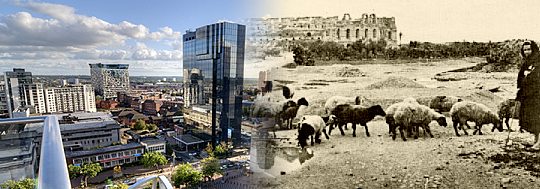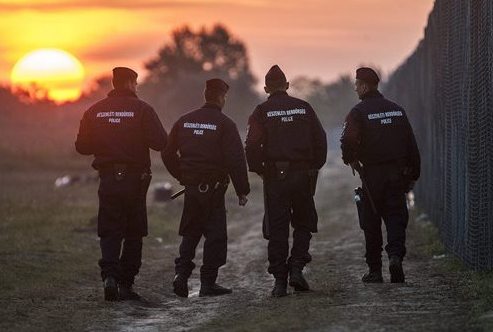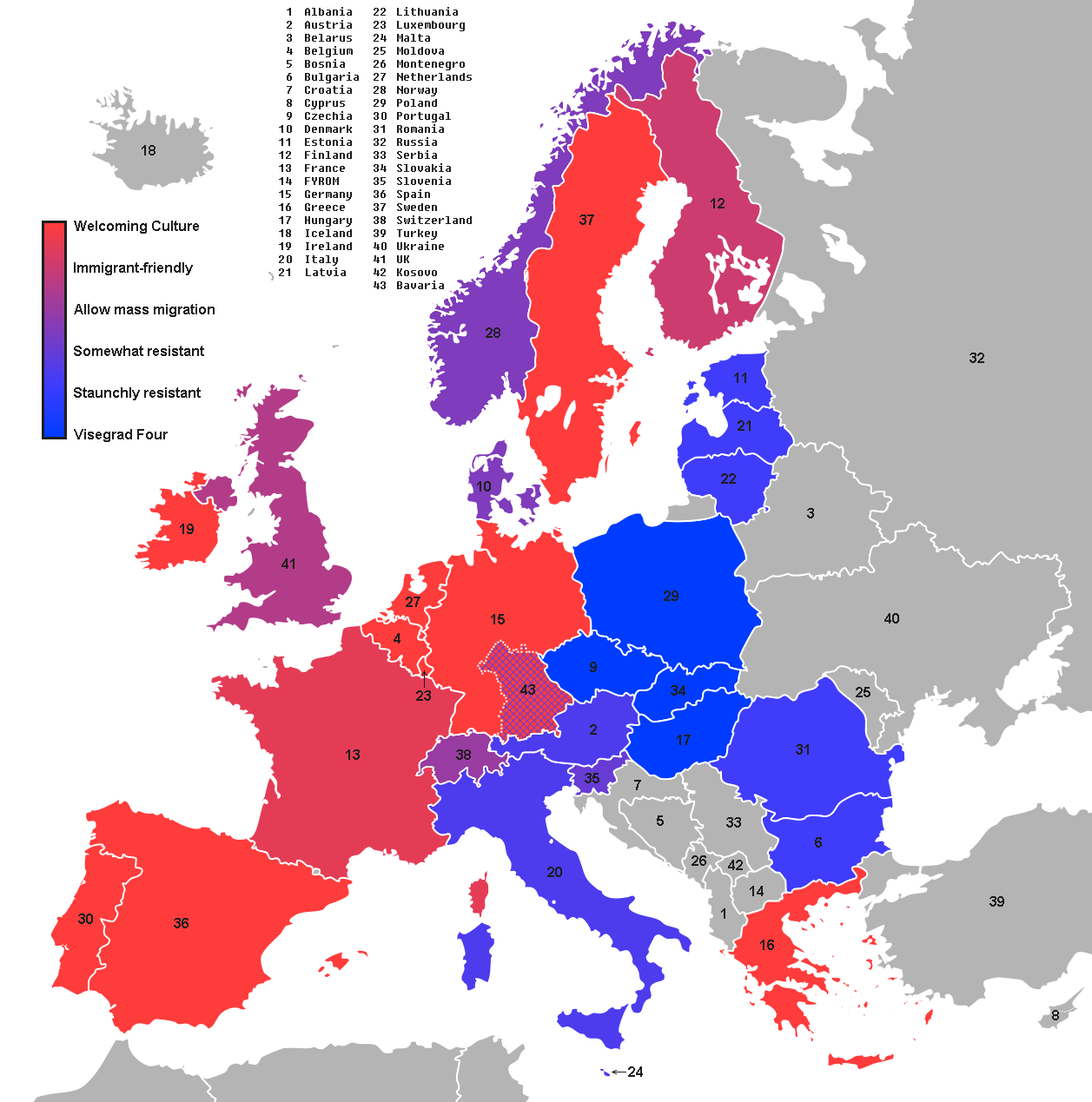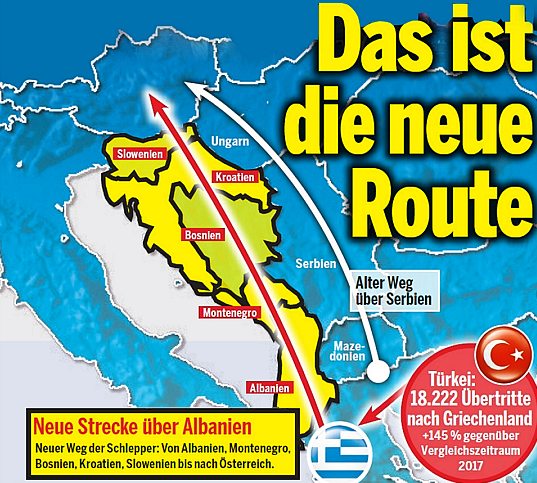
The Balkan Route for refugees has reopened.
Elisabeth Sabaditsch-Wolff, who recommended the following article for translation, sends this prefatory note:
Thanks to Saint Greta and her apostles — the resurgent Greens party — this is a non-story in the Austrian media. Everyone is focused on climate change and its associated disasters, or lack thereof.
Does the youngest ex-chancellor care? Not much. He just wants to be re-elected in September, whether on a climate platform or anything else.
Many thanks to JLH for translating this piece from the Austrian media project Addendum.org:
The Balkans Are Becoming Porous Again
by Georg Gassauer and Benedikt Morak
New figures show that there was a 76% increase in new arrivals in the pivotal land of Bosnia in 2019. More and more people are beginning what is known to immigrants, politicians and authorities as the “game” — the gamble of (illegal) travel along this passage to the EU. We investigated on the spot.
Something is happening again in the Balkans. That is shown by the numbers from inside the Immigration Taskforce of the Austrian Interior Ministry.
By the end of May/beginning of June of 2019, there were an estimated 80,000 persons somewhere along the chaotic Balkan route, between the Bosporus and Spielfeld. At several stations along the way, authorities register clear increases in comparison to the previous year at the same time: up 155% between Greece and North Macedonia; up 76% in the pivotal country of Bosnia; up 31% in Croatia.
More Attacks on the Balkan Route
After Italy was able to reduce passage over the Mediterranean to zero, the passage through the Balkans, called by immigrants, politicians, authorities and the residents of the region the Game, became attractive again. The route ex-chancellor Kurz had once declared closed became porous again. Needed for the game — the word is a play on computer games where it is necessary to pass different levels in order to reach a goal or break a record — are time, luck and a smartphone. Between the Aegean and the Alps, participating immigrants pass through level after level. The goal is Austria, Germany or Sweden. Many make it through; some are stranded along the way; several are killed. Our reporters Georg Gassauer and Benedikt Morak investigated at the most important stations. Encountering participants, major players and minor players, they traveled especially in Bosnia, the pivotal point on the route.
Level 1: Greece
Among those who play the game is Amir (name changed) from Afghanistan. He traveled on a forged Austrian pass from Turkey to Greece, intended to fly from there to Germany, but at the airport had to return to Start. German customs, which checked air passengers from Greece, were alerted. So Amir stayed there: the alternative was the land route.
Why the strictness? March 20, 2016 marked a kind of new beginning of European immigration policy. Because of the pressure from the Austrian government at the time, the borders of four countries on the western Balkan route (Slovenia, Croatia, Serbia, North Macedonia) were closed simultaneously. Meanwhile, German Chancellor Angela Merkel’s diplomacy was being implemented, and the era of close cooperation between EU countries and Turkey began. The official position was that a refugee and immigration crisis like 2015 shouldn’t happen again. And in fact, the number of arrivals from that time was not equaled.
Nevertheless, despite all measures taken, 116,537 arrivals from Turkey to Greece were counted between April 1, 2016 and May 31, 2019. Amir from Afghanistan was one of them. And now, in the summer of 2019, the pressure on the border “is getting stronger and stronger.” So says Gerald Tatzgern, of the section for organized immigration crime in the federal police. He warns that migrants stopped for now on the Balkan route “are slowly losing their patience and want to continue.”

